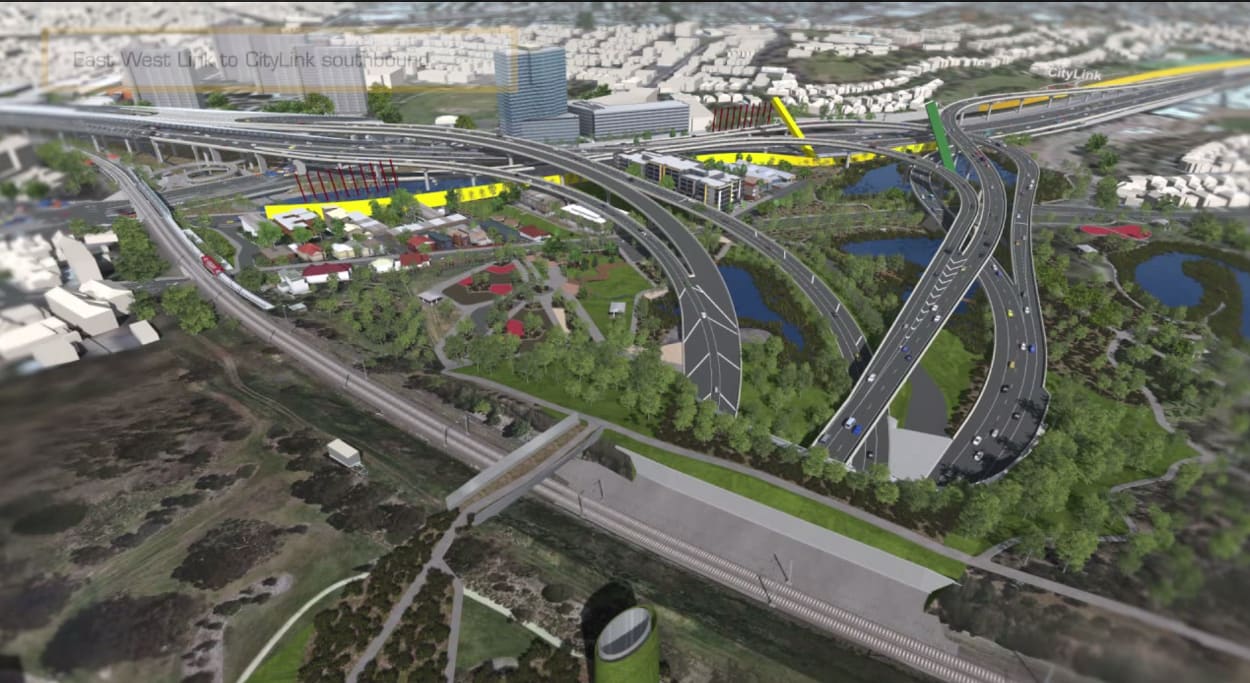The East-West Link is dead - a victory for 21st-century thinking
By Peter Newman, Curtin University.
Labor’s state election victory in Victoria has fatally undermined Melbourne’s most controversial tunnel, the now-doomed East-West Link, with new Premier Daniel Andrews pledging to rip up the contracts for the project.
His decision is a victory for anyone who values 21st-century urban thinking over the outdated car-first mentality.
It’s also a financial relief, because – as the project’s back story shows – the East-West Link was always more about politics than economics.
Courting cars
For many years, the only groups calling for a tunnel to link Melbourne’s Eastern and Citylink freeways were the RAC of Victoria and VicRoads. The problem was that the tunnel never made economic sense when it was just a freight project, yet most attention in the transport planning system was on public transport, where demand was growing rapidly. The East-West tunnel needed a large dose of cars to justify it.
Enter Tony Abbott, who pledged A$1.5 billion before last year’s federal election for the East-West plan, arguing that Australians love their cars and public transport was not in his federal knitting.
The East-West project grew in concept and soon became a massive capital cost, with the price tag for the whole plan, including the western extension to Melbourne’s port, threatening to hit A$10 billion and swamp the transport budget.
Meanwhile, in the waning days of the first Infrastructure Australia (on which I was privileged to serve for four years), it became obvious that the East-West tunnel and Sydney’s WestConnex would never be subject to the scrutiny of our process. They were to be seen as purely political projects and the case for their going ahead would depend on their popularity, not on value for money.
Why tunnelling Melbourne was a bad idea
The old shibboleth that building roads is vital for improving the economy is no longer true. Economic growth has divorced itself from car dependence (my new book with Jeff Kenworthy, The End of Automobile Dependence, traces the fall of the empire of car-based planning).
Growth in the Victorian and Australian economies now depends on the growth in “knowledge economy” jobs. These jobs at the creative, productive, innovative edge of our economy are now firmly enmeshed in the dense centres of our cities.
As the US urban economists Ed Glaeser and Richard Florida have shown, the knowledge economy depends on close interactions between creative people and those who can deliver projects. This work requires intensive spaces in cities, which in turn need intensive modes of transport to enable them. This means that rail, cycling and walking are critical to the knowledge economy. Although heavily into digital communications, knowledge economy workers need face-to-face contact and are now shifting back into central and inner city locations to optimise this process.
In contrast, cars and trucks are dispersive modes of transport, and are needed for the consumption economy. These jobs are important too, but are essentially based in the dispersed spaces of the suburbs. These jobs are not the ones we are seeking as much as those in the knowledge economy, because they do not drive productivity growth as effectively.
It is no wonder that around the world, we are seeing declining car use per capita and growing public transport use, as well as a widespread return to formerly neglected inner cities.
The six most walkable US cities have 38% higher gross domestic product than the national average. Cities now compete on new measures such as walkability and livability. Governments everywhere are aiming to build quality rail projects and make city centres more human in scale. Even Canberra and Paramatta are joining in, as they work out how to build light rail.
Melbourne has one of the most attractive city centres in the world for knowledge economy jobs. It needs to ensure that this is not lost by tipping more cars into its walkable centre. Instead it needs to encourage commuting by rail, bike and on foot.
Change in the air
Victoria’s people have now spoken. The East-West Link will be scrapped, and should be replaced by more sensible transport planning. Melbourne does need to improve east-west access for people and freight, but it should not be beyond us to find some solutions that do not break the bank.
Clearly there are plans for upgrading rail access through several proposed rail projects, including the original Melbourne Metro plan, and the Airport Rail Link. Doncaster Rail should remain on the table, hopefully not for another 100 years, as it is a simple and direct way to move passengers east-west.
The freight system seems to be amenable to much simpler concepts than the East-West Tunnel, like those presented by the Habitat Trust, using several inland rail interchange facilities.
The same principles should lead New South Wales to modify the Connex West project, especially where it spills traffic into Sydney’s central and inner areas. Such traffic “solutions” actually harm the economy of inner urban areas, burying investment opportunities under bitumen for parking and road-widening, and congesting areas that already have too many cars.
The public can sense that we have to update the way we travel and how we build cities so they are not car-dependent. The road-building brigade needs to take a deep breath and see that their plans are old-fashioned. Perhaps the legacy of the East-West Tunnel will be that such projects will never again be foisted on the Australian public.![]()
Peter Newman does not work for, consult to, own shares in or receive funding from any company or organisation that would benefit from this article, and has no relevant affiliations.
This article was originally published on The Conversation. Read the original article.
